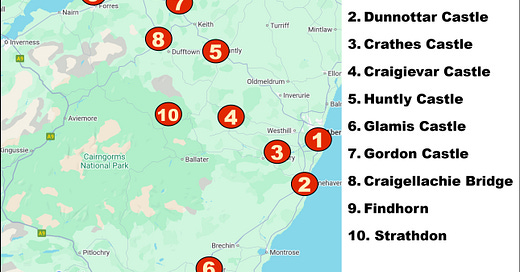Having visited Aberdeen and toured some key castles of the Scottish Northeast, we’ll now leave Aberdeenshire for a visit to neighboring Morayshire to the west, where we’ll find Gordon Castle and Crai…
Keep reading with a 7-day free trial
Subscribe to Scotland's Music, Landscape & Events to keep reading this post and get 7 days of free access to the full post archives.


